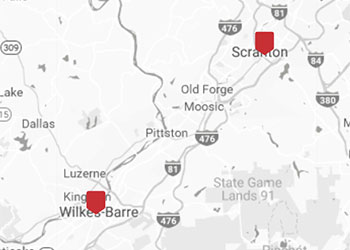Demographics
The first section of the Indicators report focuses on demographics, highlighting various indicators to describe the population of northeastern Pennsylvania.
It’s important to note that releasing these datasets does not always occur promptly; data from federal and state sources can be delayed by 18 months or more. The report utilizes the most current data available from reliable sources. Longitudinal data is especially valuable for examining trends and changes, and is essential for understanding the current circumstances.
Populations in Lackawanna and Luzerne Counties have not surpassed 1990 levels but have grown each year since the decreases reported in 2021. Annual fluctuations are minimal in the Commonwealth. Wayne County has also shown subtle variations over the last few years, and it is the only county in the study region showing considerable growth since 1990. The region saw a net population increase of nearly 5,700 between 2013 and 2023, with a net gain of 709 from 2022 to 2023.
Birth rates in Lackawanna, Luzerne, and Wayne counties have fluctuated but remain lower than those in the Commonwealth of Pennsylvania. This trend is not expected to change, as the younger population, particularly Generation Z, tends to prefer having no children or smaller families. Migration patterns in the three counties have varied more significantly. Lackawanna County experienced negative net migration from 2010 until 2019 but saw a moderate gain in the following three years. During most of the period analyzed, Luzerne County displayed notable shifts in outward and inward migration, with the largest net gains occurring in the last three reported years. Wayne County has maintained consistent inward net migration, except for two net losses in 2015 and 2016. Overall, the rates of growth in these counties were lower than the national growth rates and those of other states, leading Pennsylvania to lose one seat in its Congressional delegation recently.
Inward migration has followed a nationwide migration trend out of large, high cost-of-living metro areas, but it is unclear whether this shift will be permanent or temporary. Any sustained increase in population will have significant impacts on government, economy, housing, and public services, making this an important indicator to monitor.
There are also important implications in the makeup of the region’s population. Older adults comprise a larger share of the population locally than in the Commonwealth. This pattern has not changed drastically over the last several years. The relatively low ratio of children to seniors indicates future workforce challenges; there will be fewer residents filling jobs as Baby Boomers continue to exit the workforce. This, however, is a national challenge. Furthermore, the longer lifespans of many of today’s older adults mean there will be an increased need for support services on their behalf.
Although the total populations of Lackawanna, Luzerne, and Wayne counties have largely been White/Caucasian, the percentages of residents who are non-Hispanic White/Caucasian alone have declined since 1990. The growth of the Hispanic/Latino population has been considerable, with the share of the population growing annually in all three counties and the Commonwealth as a whole. The percentages of Asian Americans and African Americans in all three counties have also grown since 1990, along with those identifying as some other or two or more races.
View Indicators Map

